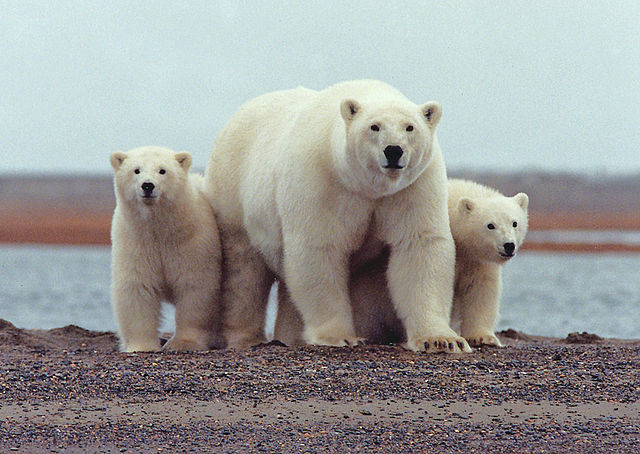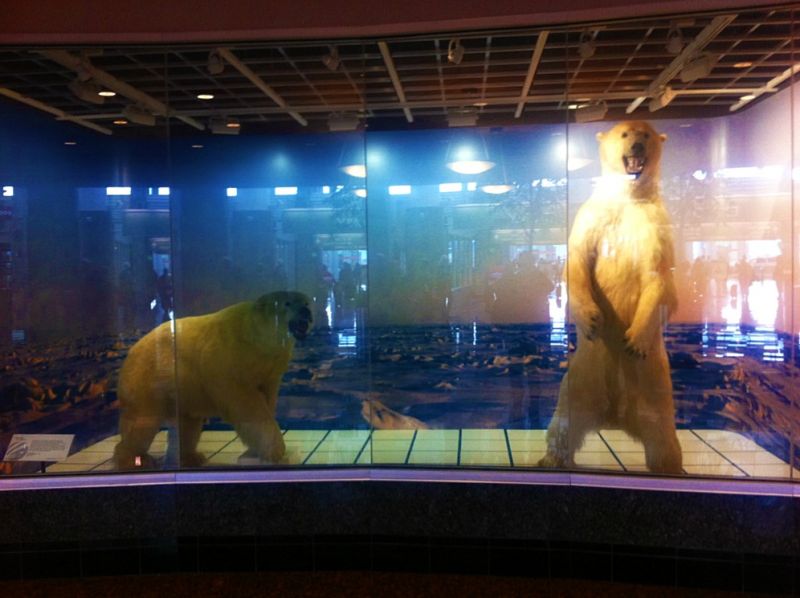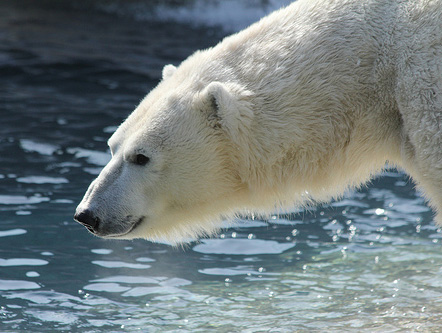This story first appeared on the Guardian website and is reproduced here as part of the Climate Desk collaboration.
The bears that gather around Churchill waiting for the waters in Hudson Bay to freeze over are the most studied on Earth. Scientists have tracked their decline, linked to climate change, for more than 20 years. Conservation officials have tagged most of them. Locals have given them names – though some of those admittedly are less than complimentary: one of the large adult males is known as Lardass.
From Tuesday, anyone with a web browser can make their own observations of the polar bears of Hudson Bay, through a series of live feeds installed by the group Explore.org at a number of locations around the town of Churchill and along the shores of the bay.
The sites were chosen for their vantage points over the polar bears’ typical routes as they undergo their annual migration from a summer of fasting on land to newly frozen sea ice.
The cameras were positioned: atop an enormous grain elevator in the Churchill port; inside a historic fur trading fort; on a research tower in a national park; at a tundra lodge; and on tundra buggies, the trailers mounted on monster truck-sized tyres used to transport tourists.
“At Explore.org we can’t solve global warming but our live cams can bring the world up close and personal with nature,” said Charlie Annenberg, founder of Explore.org. “Simply put, the citizens are now the scientists.”
The warming of the Arctic is extending the number of ice-free days in Hudson Bay, forcing the bears off the sea ice, and away from their main diet of ring seals, and on to the land.
“Over time, as they return to the ice later and later, they return to the ice in poorer condition every year,” said Martyn Obbard, a research scientist with the Ontario ministry of natural resources who studies the bears of southern Hudson Bay.
Capturing that journey on camera, and then live-streaming the video over the internet from a remote, sub-Arctic location, presents obvious challenges. There is no road system around Churchill, and no communications outside town. “It’s a cold place to work, the weather never co-operates and of course there are polar bears running around,” said BJ Kirschhoffer, director of field operations for Polar Bears International, who worked with the Explore.org crew to help install the cameras.
The sites were chosen for their vantage points over the polar bears’ typical routes as they undergo their annual migration. Photograph: Explore.org
A few years ago, Kirschhoffer mounted a camera on a boom arm extending out of a tundra buggy. “It provided a low, eye-to-eye view with a polar bear, but could move up and out of the reach of the bear,” he said. The camera itself was mounted intside a protective plastic bubble.
“This bear just wandered over and the camera was low,” said Kirschhoffer. “I didn’t see it coming around the corner. It was very curious of the camera. It sniffed it for a moment. It opened its mouth, and then it put its canine teeth right on the plastic dome.”
By the time he could react and get to the controls to raise the boom, there were two puncture holes in the protective dome. “I still have the dome with the two little puncture holes in it, just perfectly sized for the canine teeth,” Kirschhoffer said.












